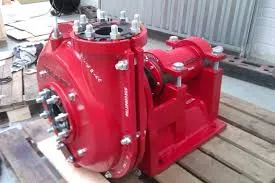Hindi
- Afrikaans
- Albanian
- Amharic
- Arabic
- Armenian
- Azerbaijani
- Basque
- Belarusian
- Bengali
- Bosnian
- Bulgarian
- Catalan
- Cebuano
- Corsican
- Croatian
- Czech
- Danish
- Dutch
- English
- Esperanto
- Estonian
- Finnish
- French
- Frisian
- Galician
- Georgian
- German
- Greek
- Gujarati
- Haitian Creole
- hausa
- hawaiian
- Hebrew
- Hindi
- Miao
- Hungarian
- Icelandic
- igbo
- Indonesian
- irish
- Italian
- Japanese
- Javanese
- Kannada
- kazakh
- Khmer
- Rwandese
- Korean
- Kurdish
- Kyrgyz
- Lao
- Latin
- Latvian
- Lithuanian
- Luxembourgish
- Macedonian
- Malgashi
- Malay
- Malayalam
- Maltese
- Maori
- Marathi
- Mongolian
- Myanmar
- Nepali
- Norwegian
- Norwegian
- Occitan
- Pashto
- Persian
- Polish
- Portuguese
- Punjabi
- Romanian
- Russian
- Samoan
- Scottish Gaelic
- Serbian
- Sesotho
- Shona
- Sindhi
- Sinhala
- Slovak
- Slovenian
- Somali
- Spanish
- Sundanese
- Swahili
- Swedish
- Tagalog
- Tajik
- Tamil
- Tatar
- Telugu
- Thai
- Turkish
- Turkmen
- Ukrainian
- Urdu
- Uighur
- Uzbek
- Vietnamese
- Welsh
- Bantu
- Yiddish
- Yoruba
- Zulu
Telephone: +86 13120555503
Email: frank@cypump.com
दिसम्बर . 04, 2024 20:26 Back to list
Efficient Sewage Transfer Pumps for Wastewater Management and Treatment Solutions
The Essentials of Sewage Transfer Pumps Importance, Types, and Applications
Sewage transfer pumps play a critical role in the management and treatment of wastewater. As urbanization increases and populations grow, the need for efficient sewage management becomes paramount. These pumps help transport sewage from low-lying areas to treatment facilities, ensuring that wastewater is disposed of safely and effectively. In this article, we will explore the importance, types, and applications of sewage transfer pumps.
Importance of Sewage Transfer Pumps
Sewage transfer pumps are essential for maintaining public health and environmental safety. They help prevent flooding in urban areas by efficiently moving wastewater from collection points to treatment plants. Without these pumps, cities could face severe sanitation issues, leading to health hazards like waterborne diseases and contamination of drinking water supplies. Moreover, sewage transfer pumps minimize the risk of overflow, which can lead to costly environmental clean-ups and regulatory fines.
These pumps also aid in the treatment of wastewater, which is a crucial step in the water cycle. Proper treatment ensures that the water returned to the environment is clean and safe for wildlife and plants. Therefore, effectively moving sewage to treatment facilities is vital in protecting our ecosystems and natural resources.
Types of Sewage Transfer Pumps
There are several types of sewage transfer pumps, each designed for specific applications and requirements.
1. Submersible Pumps These pumps are designed to be submerged in the sewage and are widely used in residential, commercial, and industrial applications. They have the advantage of being able to handle solids and debris found in sewage, making them ideal for environments where heavy particles are present.
2. Self-Priming Pumps Ideal for applications where the pump needs to be installed above the sewage water level, self-priming pumps are capable of drawing water into the system without the need for priming. They are commonly used in sewerage treatment plants and can accommodate various sewage compositions.
sewage transfer pump

3. Diaphragm Pumps Known for their ability to handle viscous liquids and a variety of solid waste, diaphragm pumps are used in applications requiring precise flow control. They are often utilized in industrial settings where the sewage may be more challenging to process.
4. Screw Pumps These pumps have a unique design that allows them to handle large volumes of sewage with a low shear rate, minimizing the risk of damaging sensitive materials within the sewage. They are often used in municipal wastewater treatment facilities.
5. Centrifugal Pumps These pumps utilize centrifugal force to move sewage, making them efficient for large-scale operations. They are commonly found in municipal systems and industrial applications, capable of handling significant amounts of wastewater.
Applications of Sewage Transfer Pumps
Sewage transfer pumps find applications across various sectors. In municipal settings, they are utilized in sewage treatment plants, pumping stations, and public sewage systems to ensure efficient movement of wastewater. In residential areas, submersible pumps are often installed in basements and homes where flooding can occur, providing a safeguard against water damage.
Industrial applications also rely heavily on sewage transfer pumps, especially factories and processing plants that produce wastewater as part of their operations. These systems help maintain compliance with environmental regulations, ensuring that wastewater is treated and discharged properly.
Additionally, construction sites often utilize temporary sewage transfer pumps to manage wastewater during project developments. This prevents overflow and contamination of the surrounding environment, ensuring that construction sites remain compliant with health and safety regulations.
Conclusion
In summary, sewage transfer pumps are indispensable components of modern wastewater management systems. They protect public health, safeguard the environment, and facilitate the efficient treatment of sewage. With various types available, from submersible to centrifugal pumps, these systems can be tailored to meet specific needs across municipal, residential, and industrial applications. As global emphasis on sustainable practices grows, the importance of reliable sewage transfer systems will only continue to increase, making them a crucial element in maintaining clean and safe communities. Investing in high-quality sewage transfer pumps can lead to long-term benefits for both the environment and public health.
-
Horizontal Split Case Pump with GPT-4 Turbo | High Efficiency
NewsAug.01,2025
-
ISG Series Pipeline Pump - Chi Yuan Pumps | High Efficiency, Durable Design
NewsAug.01,2025
-
Advanced Flue Gas Desulfurization Pump with GPT-4 Turbo | Durable & Efficient
NewsJul.31,2025
-
ISG Series Vertical Pipeline Pump - Chi Yuan Pumps | Advanced Hydraulic Design&Durable Construction
NewsJul.31,2025
-
ISG Series Vertical Pipeline Pump - Chi Yuan Pumps | Energy Efficient & Low Noise
NewsJul.31,2025
-
pipeline pump - Chi Yuan Pumps Co., LTD.|High Efficiency&Low Noise
NewsJul.31,2025










